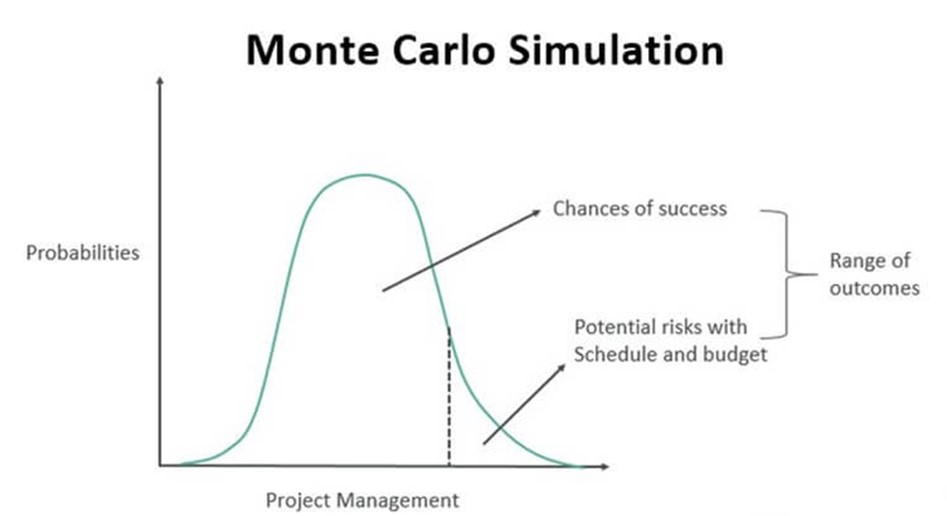The Promised Land of Industry 4.0: five key trends for an 'actionable' digital transformation in 2022
In October 2015, John Chambers, CEO of Cisco Systems, stated: "At least 40% of all companies will die in the next 10 years, if they don't figure out how to change their entire company to adapt to new technologies."
---
Five years have passed since John Chambers spoke in such absolute terms about the dubious sustainability over time of businesses that did not get on the digital transformation train. Today, in January 2022, it has become quite a challenge to develop a presentation, hold a meeting between managers, and even write an article, without being tempted by the appeal generated by the use of the term digital transformation. The truth is that beyond the hype of recent years, the execution of partial or comprehensive digital transformation projects of public and private organizations is a tangible fact in their budgets in a generalized way. Whether due to the push of native digital companies (e-commerce, fintech, healthtech, among others) whose main competitive advantage is the optimization of digital business models versus traditional ones, or by the adoption of technological tools that reduce the amount of annual costs, this is a trend that seems to continue to rise year after year
In 2016 Ashley Friedlein, president and founder of Econsultancy, defined digital transformation as "The journey to being a digital organization where digital means two things: first, focus on the customer experience regardless of channel, and second, place, to have a digital culture".
But how to reach this Promised Land effectively and sustainably over time? From an approach of adaptability and business transformation in 2022, the formula for success is composed of five necessary trends:
#1. Culture transformation
This is possibly the most important trend on the road to a comprehensive and sustainable digital transformation over time. Under the umbrella of corporate culture are values, actions, and people, and it is precisely this triad that, together with the vision and mission of the organization, significantly determines the relationship between worker-company, company-company (within of the market), and worker-worker. As an illustrative example and in a way known by almost all audiences, the digital acceleration of various entities in the last two years has been motivated by the panorama of the COVID era, making the job more flexible, and accelerating the diversification of business models, towards the well-known hybrids in the big cities. These changes in the traditional pillars of work and business are at the epicenter of digital transformation and have begun to position themselves as a clear competitive advantage for those companies that have adopted them as their own. Entities such as Zityhub and UtopicUs have long stood as visionaries for the creation of remote jobs and transformational services that adapt to the needs of digitally transformed workers and companies. The main benefits of these solutions include the reduction of fixed costs for companies, the attraction of talent, and greater worker satisfaction that often impacts positively their productivity.
Likewise, the transition to a company culture that integrates new ways of working should ideally be done following a top-down approach, while keeping eyes, ears and feet on all levels of the company hierarchy. It is not about controlling, but about accompanying and leading the change. In this sense, the provision of economic and technological resources is crucial for the execution of a cultural transformation that is sustainable over time, together with continuous training in technology, security and regulations applicable to each case. The main goal is to position employees as the main characters and referents of the digital transformation of the company, understanding that their contribution is essential to achieve its great milestones.

Image 1: UtopicUs office in Gran Vía, Madrid
#2. Security by default and by design
Theory and practice indicate that digital business and working models cannot be sustained without a robust IT security foundation. Cybersecurity must be identified within the digital transformation as an essential foundation on which to build new models and as a key element in the success of a long-term sustainable digital business. Data from 2021 on cybercrime shows that, on the one hand, ransomware attacks on companies occur every 10 seconds (InfoSecurity Group); and, on the other, that 71% of all cyber-attacks are economically motivated, followed by intellectual property theft and espionage (Verizon). Studies estimate the annual global cost of cybercrime to be $10.5 trillion by 2025, but beyond these growing figures, it must be considered that digital or digitized business activity is inevitably compromised in a world increasingly connected, from the moment in which an organization has a digital footprint and presence. In other words, when, for example, the company's internal communication system is a SaaS platform like Teams, confidential data is stored in a cloud like AWS, or employee information resides on social networks. Like LinkedIn, the risk of suffering a cyber-attack that negatively impacts business activity is high.
For this reason, designing an adequate cybersecurity strategy (cybersecurity by default and from design) in parallel with the design of the company's business model is a crucial strategy, in such a way that both coexist in the dependency necessary for survival in the digital age. Cybersecurity is, since the beginning of the digital transformation, the enabling vehicle for the sustainability over time of digital businesses, and for social responsibility regarding the use and protection of employee and customer data
#3. Hybrid profiles at the center of the strategy
The technological training of profiles in the company significantly reduces the human risk implicit in the use of technology. The so-called human risk exposes organizations to millionaire annual losses due to the lack of a training and education strategy that transforms traditional profiles into hybrid profiles. Although it is true that digital transformation is possible, to a great extent, thanks to the use of innovative and constantly evolving technologies, the transformation of profiles traditionally dedicated to the development of their tasks in independent silo structures, together with the search for a transversal approach that centralizes capabilities through technological skills. It is also an approach that tends towards inclusivity, that is, far from seeking to discard all those workers who do not fit into the millennial or Gen Z group (assuming greater technological training and ease of digital learning of these two groups), is based on the appreciation of all the capacities, and the reinforcement of those necessary to be able to carry out a complete digital transformation strategy. In this way, companies can be found in which the most senior employees complement the technological capabilities of the most junior with their experience, and vice versa.
Additionally, it should be noted that not everything in the execution of an adequate digital transformation is purely technological. In fact, digital transformation without in-depth knowledge of business in general and of the business to be developed, is simply not possible, nor can it be sustainable over time.
#4. Technological ROI and digital vision
Digital transformation must be conceived as an investment, so the decisions made in this regard must maintain that focus. It is expected, therefore, the development of a plan that includes the analysis of the recovery period of said investment (ROI or Return on Investment for its acronym in English), the cost-benefit, and other relevant factors whose objective is the understanding of the viability of the investment and the digital strategy in the short, medium, and long term.
As if it were a puzzle of which all the pieces are not known, the reality of many companies often includes the contracting of external services to consultants and suppliers for the execution of projects piled up over time and poorly coordinated with each other. These projects seek on some occasions, to mitigate the regulatory risk of the absence of a specific technological or security system, and on others, the adoption of a technology in a specific department, which will possibly end up being isolated from the rest of the organization or will require a new integration project in the future. This lack of coordination, whether it is involuntary or not, entails a series of costs that are not usually considered when calculating the ROI of digital transformation projects, and for this reason, the ability to contribute a long-term digital vision in decision-making for this type of investment. In the previous point, reference was made to the training of hybrid profiles in the digital transformation strategy, finding one of its justifications in the establishment of that strategy in digital investment.
Returning to ROI as the main ratio for measuring the potential benefit of an investment, several companies from various sectors (mainly communications, banking and technology) have begun to evaluate and establish an order of priority in the project portfolios of digital investment in organizations, based on proven market methods, such as the Monte Carlo simulation. This type of analysis is often outsourced by companies if they do not have a dedicated internal team, favoring the introduction of an external vision that enhances the optimal decision for each project portfolio. The key to establishing an order of priority in these digital portfolios lies in the observation of factors such as the ROI, the objective situation, regulatory compliance, risk, and the expected losses in the event of a cyber-attack or system failure.
Thus, the goal of these analysis consists firstly, of the ability to classify transformation projects and portfolios based on their expected loss reduction, the selection of project portfolios optimized for the budget and return on investment, and finally of the identification and prioritization of digital transformation investment areas.

Image 2: Monte Carlo Simulation illustraeducationaltive graph. Source: WallStreetMojo
#5. Consumer behavior analysis and People Analytics
According to estimates published by Statista at the end of 2021, the volume of digital data created or replicated globally over the past ten years has increased more than thirty-fold, from 2 zettabytes in 2010 to 64 zettabytes last year. But this amount will seem almost irrelevant, compared to the 40% average annual growth in 5 years that is expected from now to 2027.
With the boom of big data and data analysis, it is reasonable to think that the greatest current challenge in this field is the management and use of the information that the data provides to the company. That is why the analysis of consumer and employee behavior is more vital than ever on the path of digital transformation.
Marketing gurus have spent decades directing their studies and techniques to the analysis of consumer behavior, which entails knowing customs or consumption habits, preferences, the economic situation, and other activities. This analysis makes it possible to identify three large groups of variables to consider: purchasing behavior, usage behavior, and external and internal factors that affect the purchasing and usage process of consumers. The trend that is beginning to be observed in a general way in the market is the appearance of consumer behavioral analysis as a new solution in the portfolio of solutions of numerous consulting companies specialized in data and technology. All of this is conceived as a type of customer service that provides a relevant competitive advantage over other companies in the sector through a comprehensive analysis of the data, and the application of prediction models and AI (Artificial Intelligence) that allow the taking of decisions regarding the reception of products, demand management, and the impact of marketing campaigns, among others.
At the company level, and in relation to employee behavior, the ability to measure productivity and job satisfaction (known as talent management) through technological tools can be presented as a weapon double edged It is especially important to avoid contexts in which employee control is paramount, and to consider that the use of company talent management tools must always maintain a balance between serving employees and obtaining reliable and reliable information. objective for the company. The objective of the introduction of what is known as People Analytics allows to improve the productivity of workers through an adequate quality of life at work, and to provide valuable information to the company for its sustainability over time. Already in 2020, Marta Pérez, director of the LMS business school and organizer of the Leading People Analytics HR Tech Forum stated: "There is no digital transformation if it is not based on data and its interpretation to make strategic and operational decisions". The prediction for 2022 suggests that the trend in the use of People Analytics technologies will continue to rise, boosted by the permanence of teleworking, and the rise of hybrid models, as the main drivers.
Vision and continuous improvement
The consolidation of the five trends of the formula for a digital transformation that is actionable and sustainable over time must be conceived as a continuous improvement process. While it is true that this process is ideally made up of interconnected projects, it is crucial to stay at the forefront of new products and technological improvements that can make business activity more efficient as a whole and make the digital transformation strategy a business strategy successful.
The objective of digital transformation in business models and product and service diversification seeks, in general terms, process efficiency, cost optimization, and increased profits. This cocktail of factors favors long-term business sustainability at a time when technology is evolving at an exponential rate.
Related links
Main menu






